Modern GTM playbook for B2B SaaS
Modern GTM playbook for B2B SaaS ATTACH
How to build a high-growth engine for business software start-ups
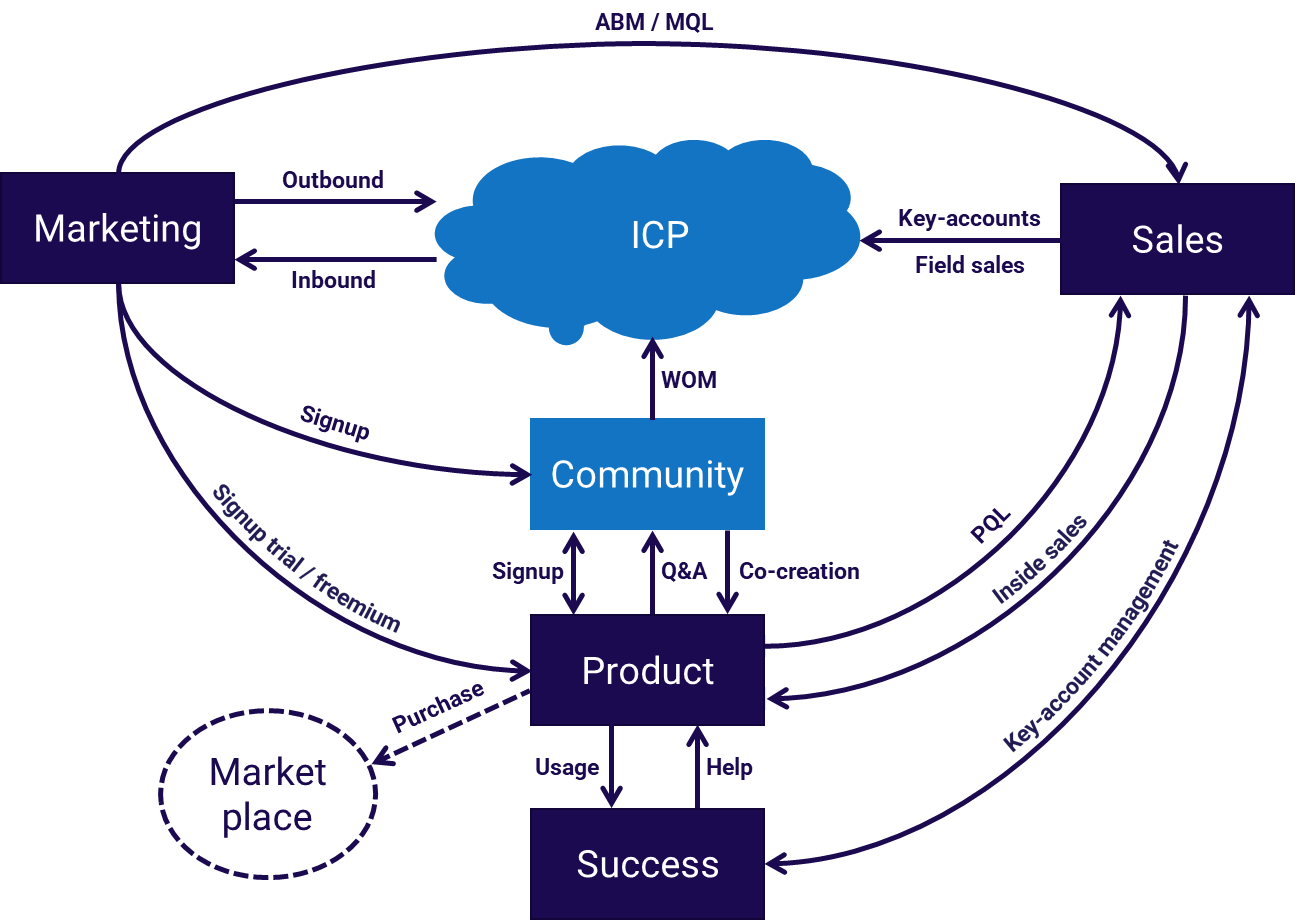
The phenomenal success of hyper-growth companies like Slack, Dropbox, Atlassian, Datadog and Snowflake has triggered many discussions about modern go-to-market (GTM) methods for B2B SaaS, including PLG, PLS, Community-Led, ABM, Marketplace and others.
PHASE 1: find the PMF ATTACH
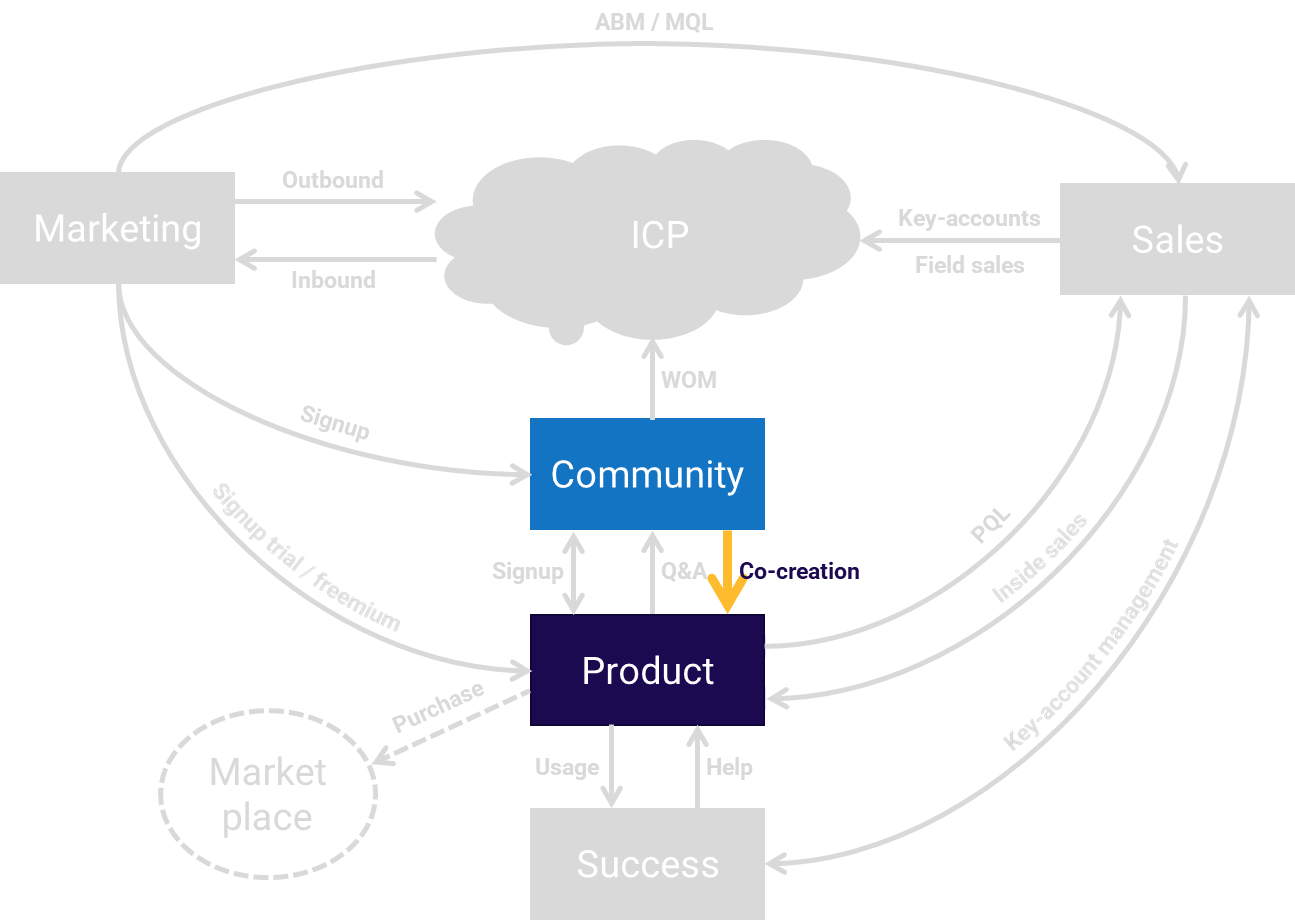 In phase 1, the actions are as follows:
In phase 1, the actions are as follows:
- Build a community of co-creators
- Find Product-Market Fit
Run a survey to ask users how disappointed they would be if the product did not exist. If 40%1 are very disappointed you have achieved PMF.
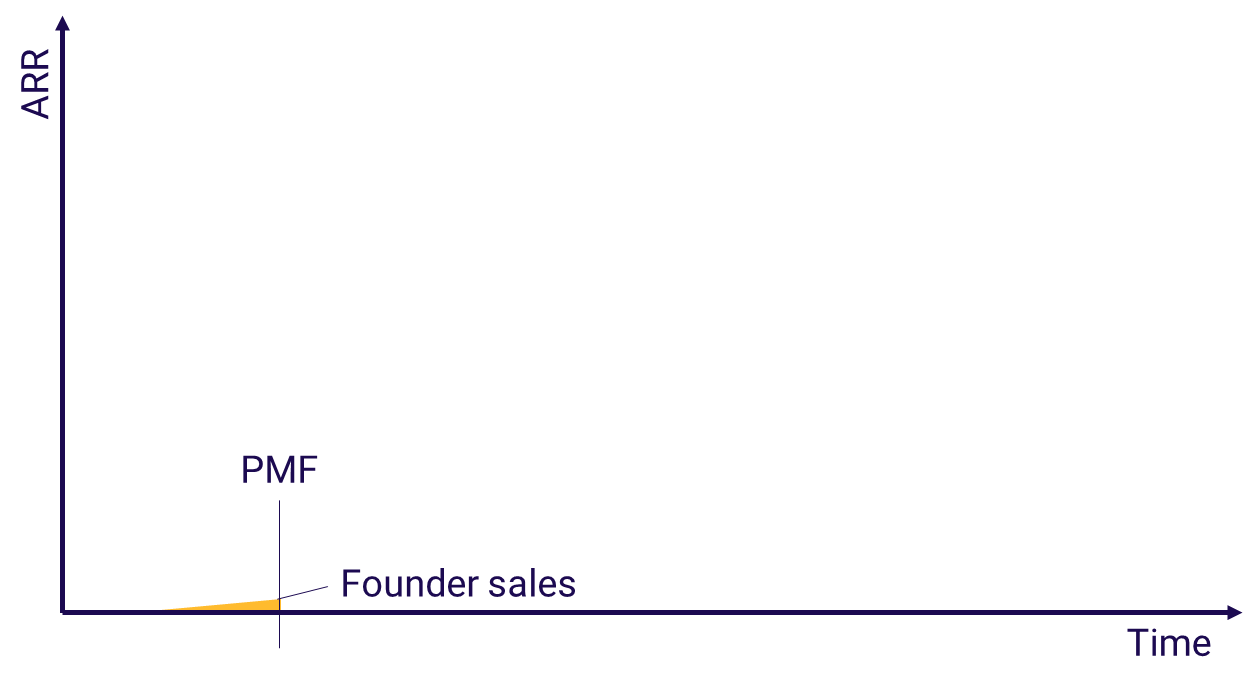
PHASE 2: build a PLG flywheel ATTACH
Phases 2–5 focus on developing the go-to-market fit (GTM-fit) and building the growth engine.
The objective of phase 2 is to build a product-led-growth (PLG) flywheel – the backbone of your growth engine. A Flywheel is, in contrast to a funnel, a self-amplifying system.
Product-related network effects are also important and can be achieved by adding collaboration features. This is the type of Word-of-Mouth (WOM) and in-product network effect we want to create in phase 2.
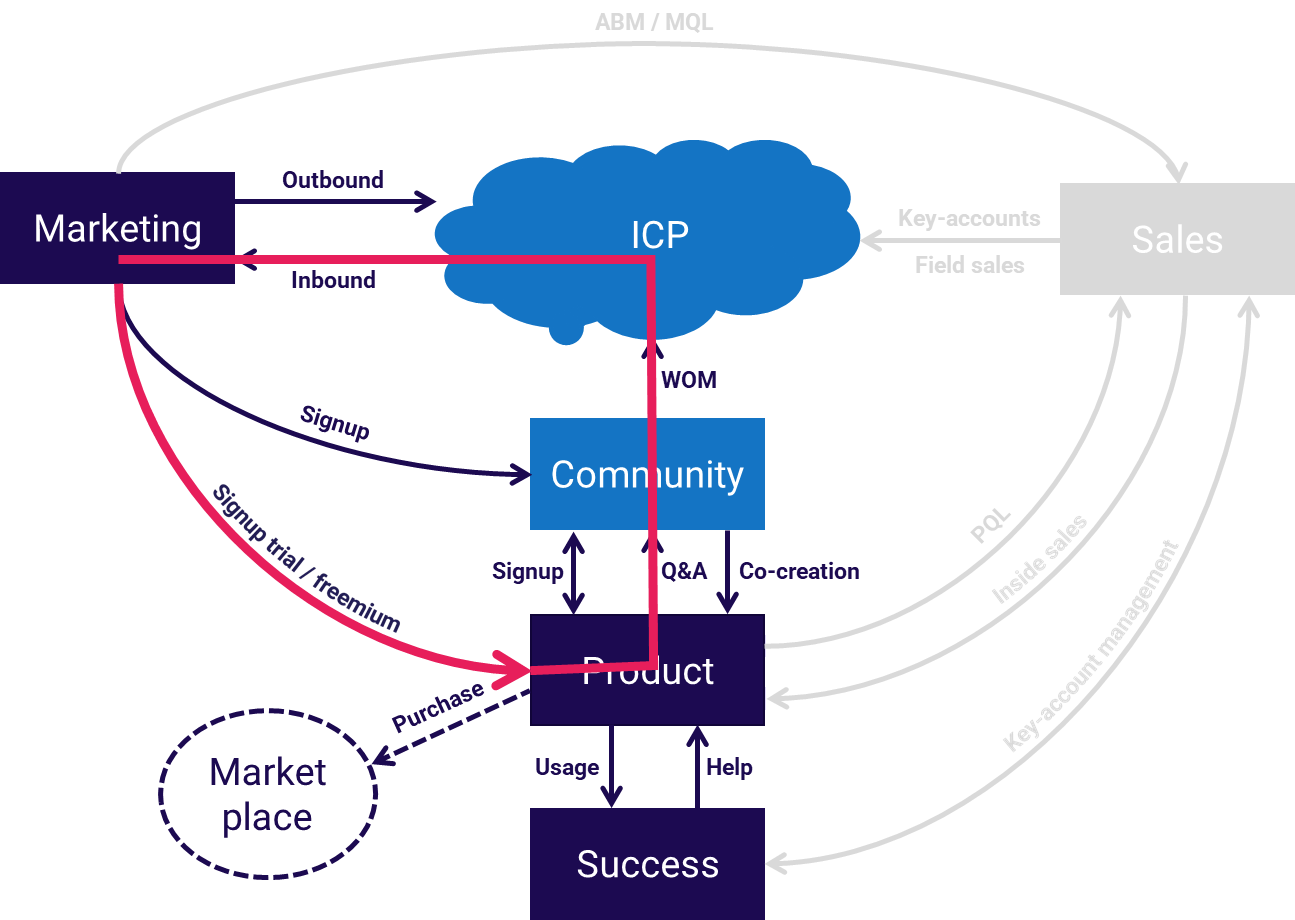
In phase 2, the actions are as follows:
- Build self-serve User Onboarding: focus your product development on programming the entire onboarding process into the product without a human in the loop. You can find more info about self-serve onboarding techniques Product-Led Growth:How to Build a Product That Sells Itself and Product-Led Onboarding: How to Turn New Users Into Lifelong Customers.
- Implement Freemium or Free Trial More information about the advantages of freemium or free trial can be found Free Trial vs. Freemium: Use the MOAT Framework to Decide.
- Add collaboration features: This is a fantastic way to “market” your product and a great way to generate network effects.Find more ways to create network effects The Cold Start Problem.
- Add referral features: For example, when someone gives you an outstanding Net Promoter Score (9 or 10), provide a link and encouragement to leave a review at G2 or your website.
- Build a brand: Position your brand either to disrupt a practice or champion a role (more here Branding: Are You a Dragon Slayer or Patron Saint?). Build your SEO architecture around your product USP and real human questions to drive sales. More on Product-led SEO can be found Product-Led SEO: The Why Behind Building Your Organic Growth Strategy.
- Establish a success team: Don’t hire people with an issue-to-resolution mindset, hire people with an issue-to-retention mindset to drive the net retention rate (NRR).
- Establish a growth team: establish a growth team with members from product management, engineering, marketing and success. More on team organization and activities can be found Hacking Growth: How Today’s Fastest-Growing Companies Drive Breakout Success.
- Serve the community: the community is a micro version of your total market that gives you direct access to the topics, ideas, wants, and needs of your current and potential customers.
- Implement a data platform: You can deploy a customer data platform (CDP) or build a modern data stack (MDS) with a data warehouse to consolidate the data from all the different tools you will deploy over time e.g., product analytics, marketing, success, CRM.
Phase 2 is an ongoing optimization, without a defined end point. The top quartile achieve web-to-signup conversions of 10% and free-to-paid conversations of 27%.
By following this product-led-growth flywheel, your ARR will increase and your customer acquisition cost (CAC), gross profit and NRR will improve step-by-step.
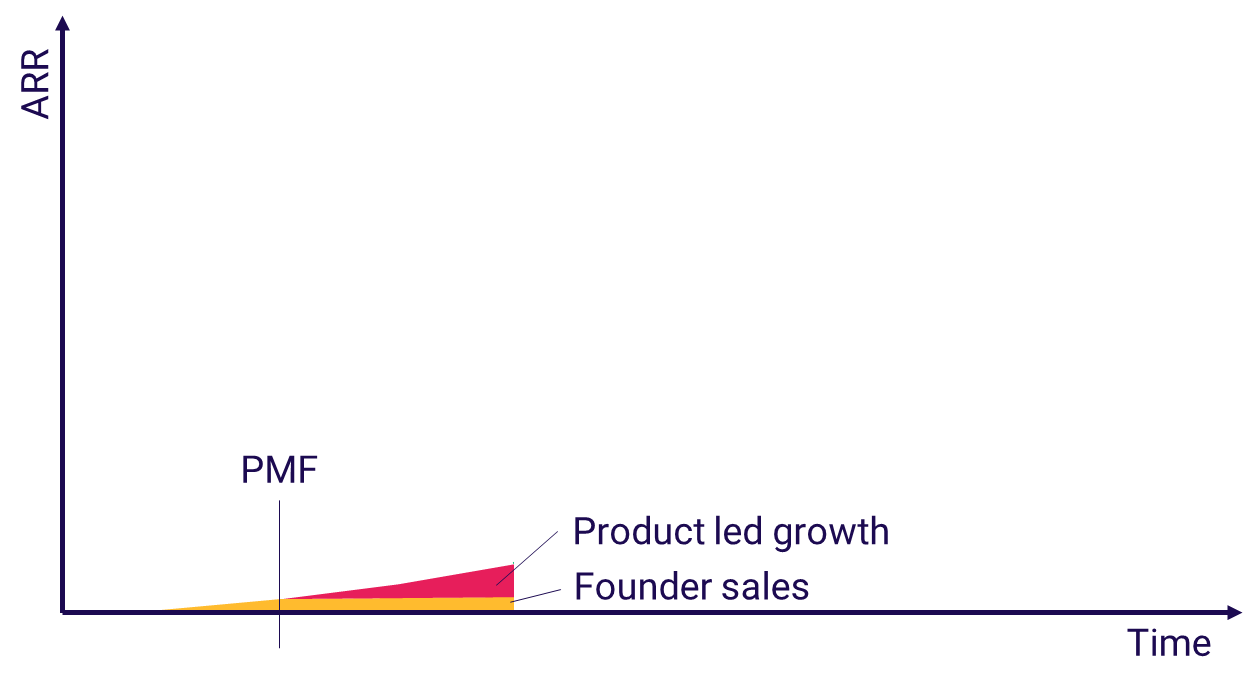
PHASE 3: add a PLS amplifier ATTACH
To boost the conversion rate in mid markets and/or to enable selling to enterprises, phase 3 adds a product-led sales (PLS) amplifier to the PLG flywheel. PLS is based on strong user self-qualifications with clear behavioral indicators that a group of users inside an account are ready to purchase.
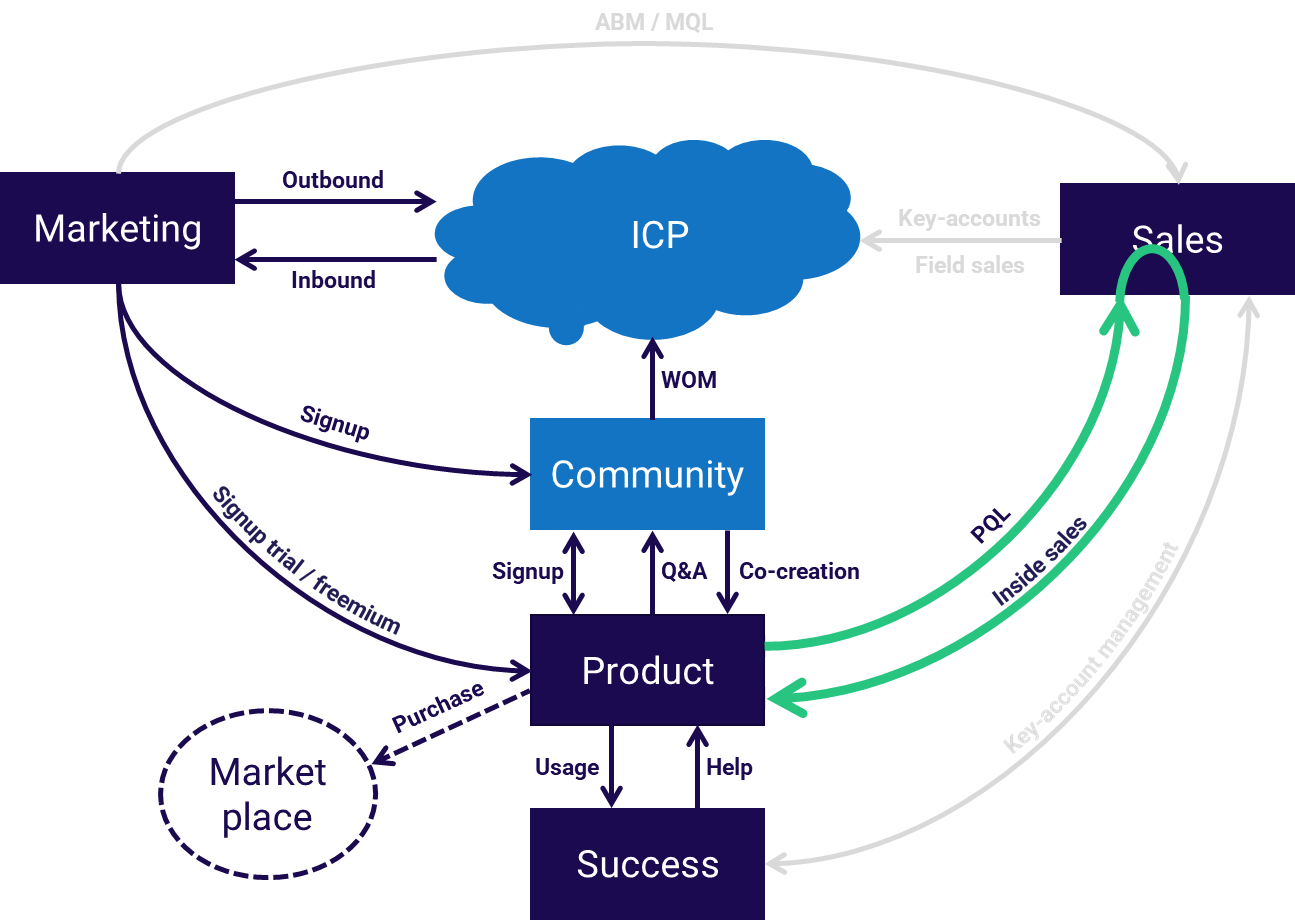
In phase 3, the actions are as follows:
- Define product qualified leads (PQL): a PQL is typically a combination of
- the number of times the user has returned to the product,
- the number of features the user has tested, and
- how soon after signing up the user tries out additional features. More information about defining PQLs can be found here and here.
- Establish an inside sales team:
- Add enterprise-grade features: additional features will be required like improved security, single-sign-on, SLA support, audit logging, etc.
Bear in mind that your goal is to let users self-serve their purchase as much as possible, without the inside sales rep, as this is cheaper and scales better.

PHASE 4: add a field-sales amplifier ATTACH
For a limited number of your largest ICP accounts (key-accounts) it makes sense to overlay a classical sales-led-growth motion on top of your PLG flywheel.
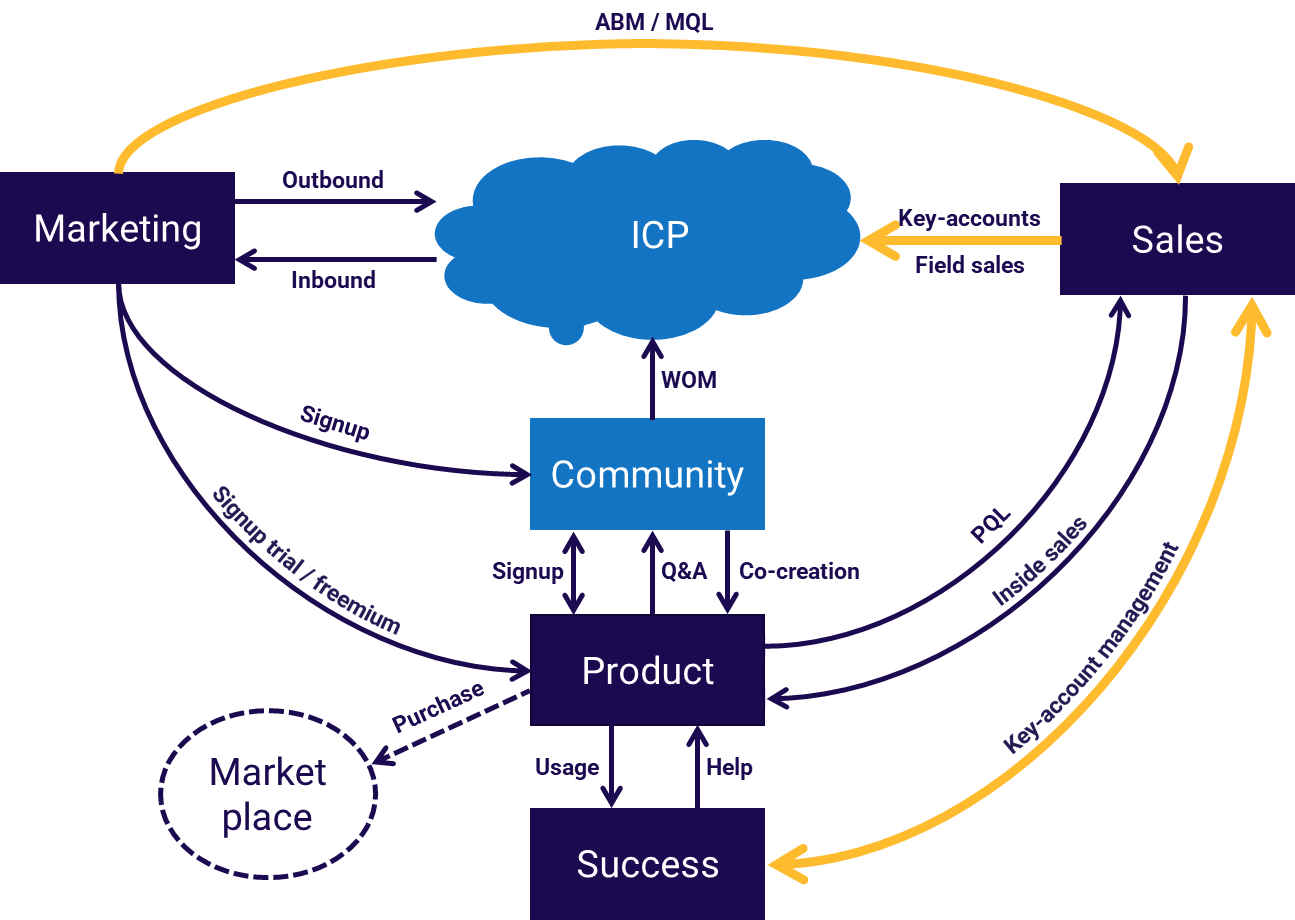
In phase 4, the actions are as follows:
- Implement account based marketing (ABM): ABM monitors the purchase intent of your key-accounts before they even visit your website. Tools track all the search behavior inside these accounts to help you predict their buying stage (target, awareness, consideration, decision, purchase).
- Establish a field sales team: now it’s time to bring in a quota-carrying sales team, the people who pitch your value to executives in key-accounts. combining field sales with the self-serve PLG flywheel comes into play when the proof-of-concept (POC) for your product starts. You can find more information about combining field sales with a PLG backbone Enterprise software leaders: add a PLG backbone in 2022.
Field sales can be a real ARR amplifier for PLG, but only for large customers or customers with significant potential.
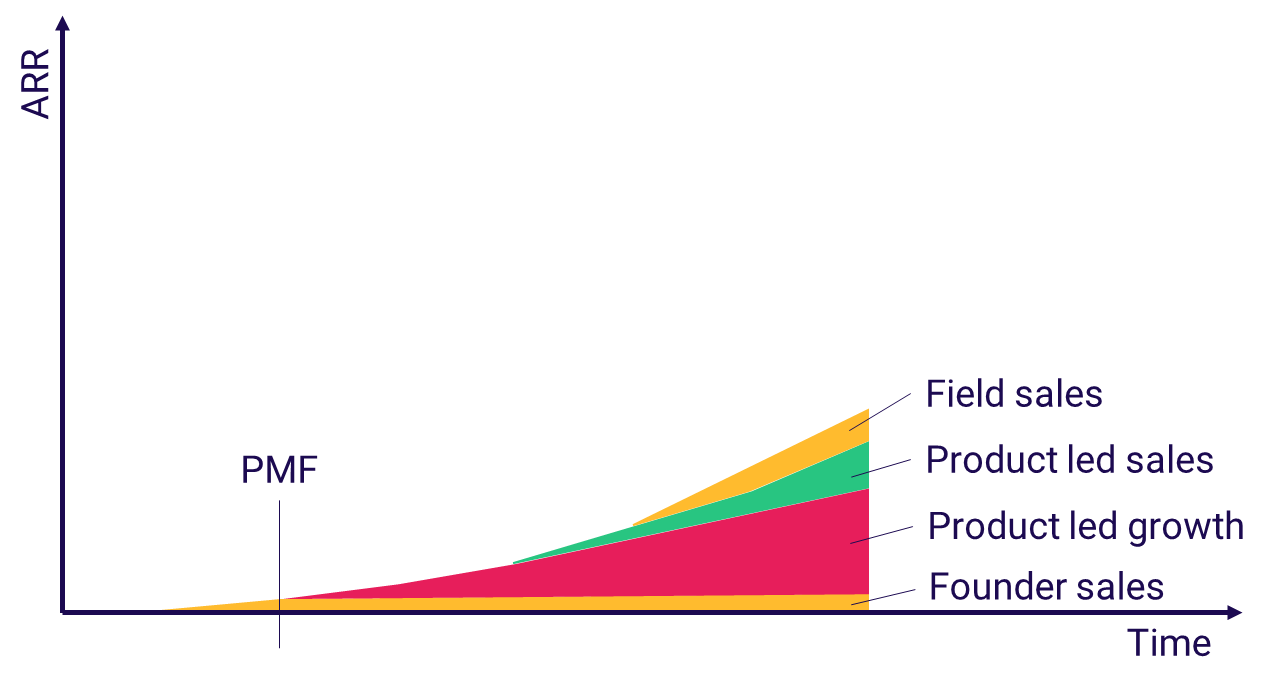
PHASE 5: build a partner eco-system ATTACH
it’s time to leverage your customer base and brand to build a partner eco-system.
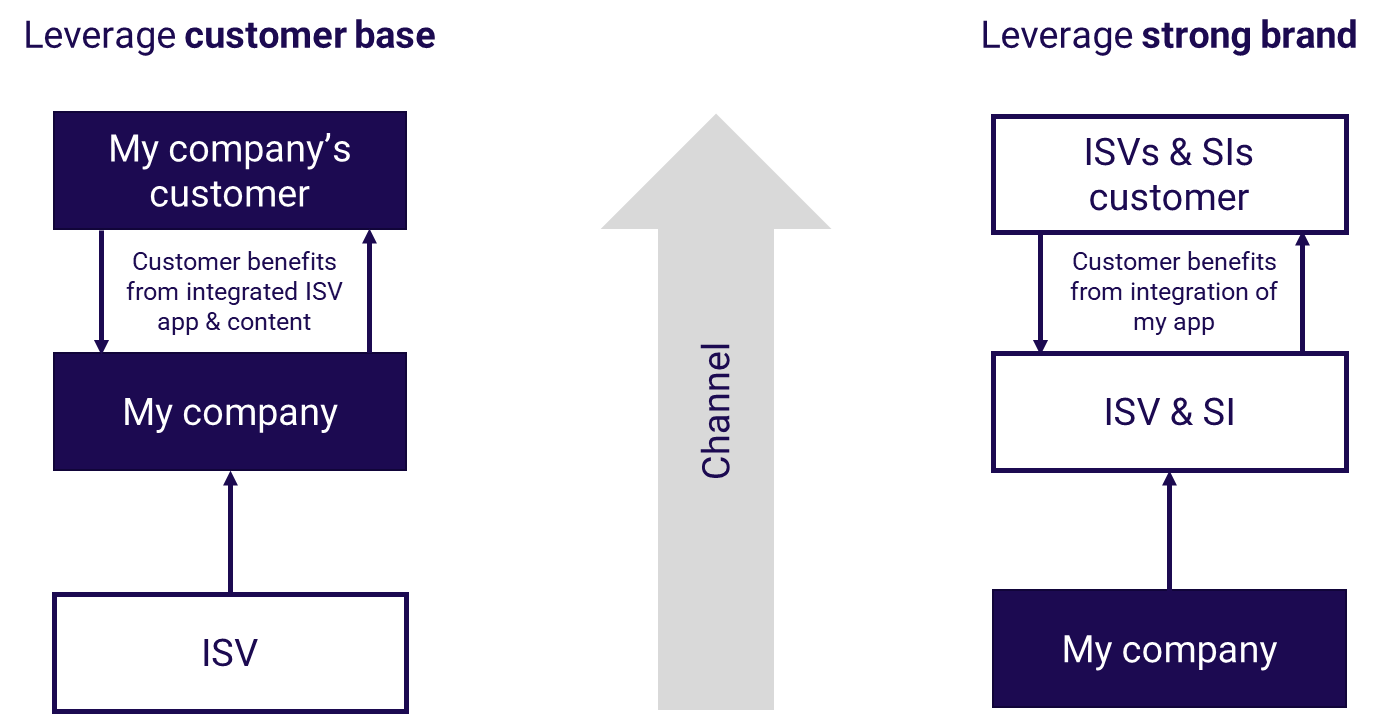
In phase 5, the actions are as follows:
- Build an app & content store: leverage your customer base to build an app & content store as a channel for ISV partners, while still using your existing credit-card purchase infrastructure to bill your customers and pay your partners.
- Use indirect channels: leverage your brand and integrate your product into the app & content stores of other ISVs and SI offerings. Note that while good attach rates are only 1%–2%2, a major app store like Salesforce with 150,000 customers could deliver 1,000 new accounts.
- Establish a channel partner team: build a dedicated channel partner team to grow your partner network and manage these relationships.
The partner eco-system is typically the icing on the cake because it leverages the customer base and brand you’ve built in the previous phases.
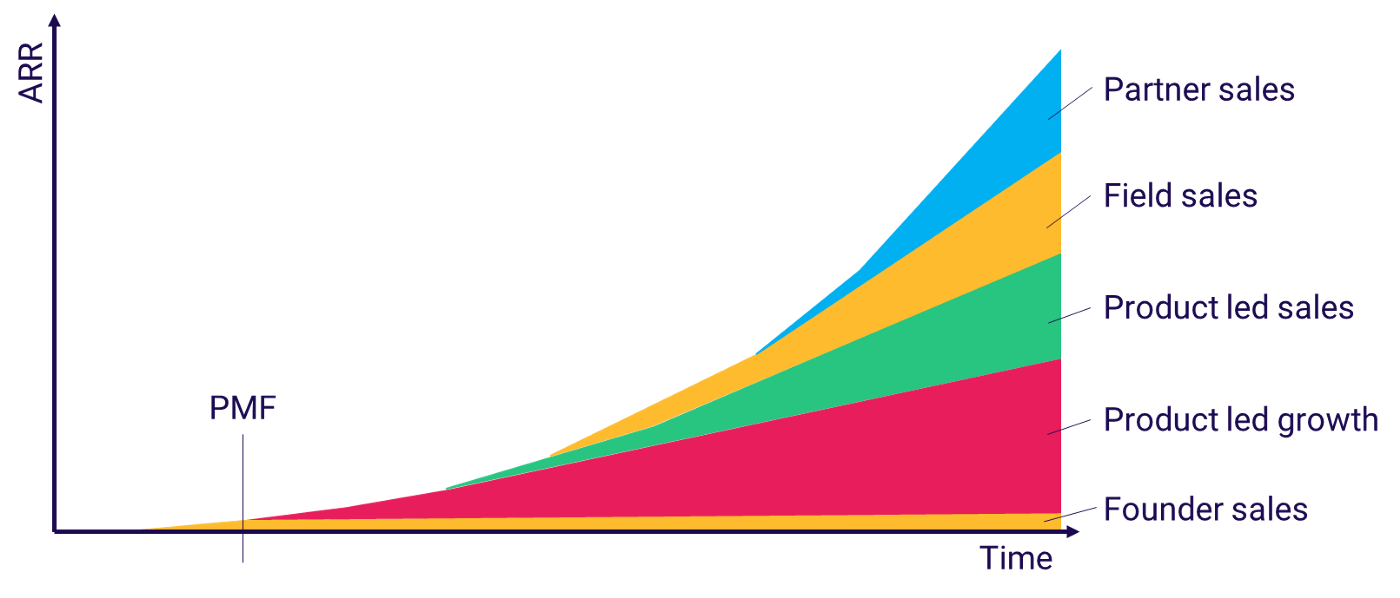
Summary
Of course, all the methods and techniques must be carefully reviewed in the context of your own offering.